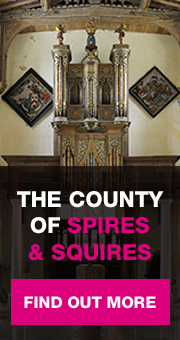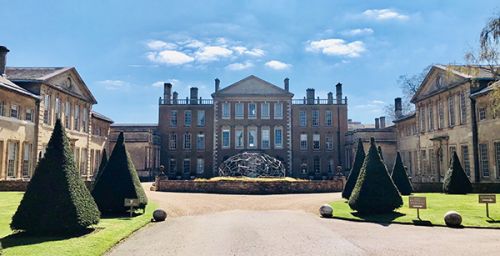13th May 2019
This month I’ve travelled to the south of the county, to the beautiful blonde limestone and thatched village of Aynho. Overlooking the fertile Cherwell valley, it is famed for the growing of apricots. On the day I visited the sun was warming the old stone walls encouraging fresh new growth from the espaliered trees, hinting at the rich fruits to come. It’s certainly the prettiest village in the area, and perhaps one of the oldest.
Although locally there are traces of earlier occupation, such as Rainsborough Camp, an Iron Age hillfort, and occasional Roman find, the village seems to have been established after the end of Roman occupation, as its name has Saxon origins. Aynho’s written history begins in 1043 with its owner recorded as a Dane named Asgar, a standard bearer for Edward the Confessor. After the Norman Conquest, William gave the manor to one of his most important Barons, Geoffrey De Mandeville as Aynho’s strategic position made it a desirable spot for a settlement from which to defend the area, and it is thought that a stone mansion was built at this time. Today the valley views are still spectacular.
The medieval manor of Aynho was a rich prize with many wealthy owners, including Baron John FitzRobert who witnessed the signing of the Magna Carta at Runnymede in 1215. The Earls of Arundel, and the influential Nevilles also owned the manor at various times. Traces of this medieval period remain in the village, most notably in the church tower, the only remaining feature of the early church, built in the 14th Century Decorated style.
The family which dominates Aynho’s history is undoubtedly that of Richard Cartwright, a London barrister who bought the estate in 1615. Over the next 350 years, Cartwright’s descendants endowed the village with a school, and encouraged the cultivation of apricots. They rebuilt the church, and the family mansion of Aynhoe Park. During England’s Civil War, Royalists took command of the house, appreciating its strategic positioning. Visiting briefly, King Charles I issued proclamations ‘from our Court at Aynho’, meaning that for one night the village was the effective capital of England. After Cromwell started to gain control, the Royalists left, burning the house to prevent the Parliamentarians from using its strategic advantage. After the war, the King compensated the Cartwrights, and the house was rebuilt and then continuously improved by the finest architects.Today in private hands it remains beautifully maintained and offers the greatest of luxury for the well heeled guests.
The church, next door to the mansion, also suffered Civil War damage. The Cartwright family funded the restoration in the early 18th century, using a London architect who had worked on their home. The church exterior today greatly resembles a smart Classical mansion, with a medieval tower tacked on the west end. It is a unique look! The interior resembles that of a London city church rather than a country parish, and the memorials to the benefactor Cartwright family overwhelm in number. It is a very attractive building, along with the village pub, the Cartwright Arms, to be found opposite.
Today there are no more Cartwright descendants, but the village is thriving. It is a popular place to live, with beautiful houses and gardens. I received a warm welcome from many folks who stopped by to say hello, and to tell me about their village. There are two friendly pubs, and lots of clubs and societies to entertain the villagers, along with a lively traditional village fete. It’s a delightful place to visit, to enjoy the hospitality, and take a walk through history in the most beautiful of settings.
For more information, please visit the excellent village website, www.Aynho.org
Your login details have been used by another user or machine. Login details can only be used once at any one time so you have therefore automatically been logged out. Please contact your sites administrator if you believe this other user or machine has unauthorised access.








